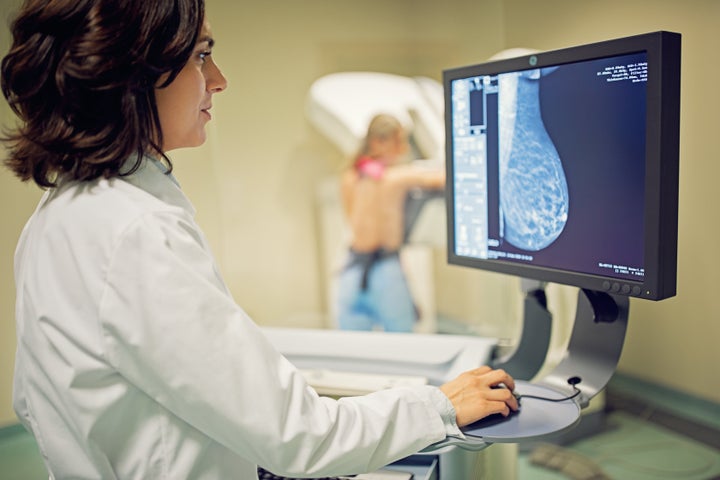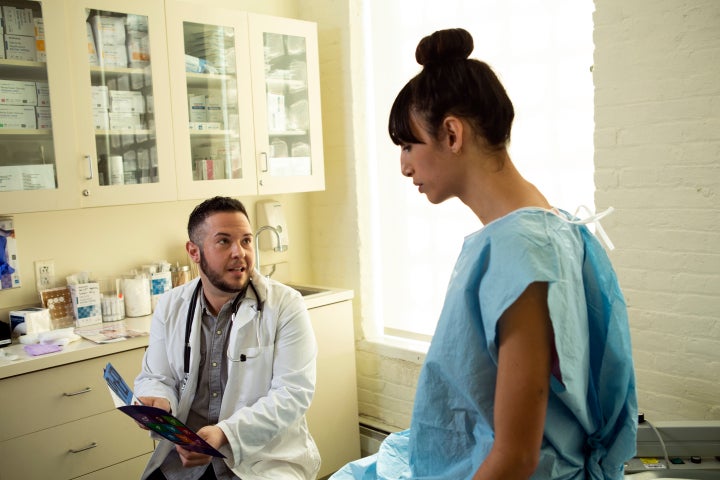“Flattened like pancakes,” is how Rita Olink describes what happened to her breasts at her last mammogram screening. But instead of wincing, the 65-year-old trans woman from Sudbury, Ont. recounts the experience with satisfaction. For her, the pain is inconsequential.
“The rest of it, we can handle. Not being treated like another woman? That would be something that keeps us away,” she said.

An estimated one in eight cis women will develop breast cancer in their lifetime, and they aren’t the only ones at risk: transgender women, men, and non-binary Canadians are all capable of being diagnosed with breast cancer and should take measures to screen themselves. But for many trans Canadians, how their identities are affirmed or rejected by health-care providers can be the deciding factor on whether they get checked.
Trans Canadians aren’t getting screened
Barriers to trans-inclusive health care have made screening an uphill battle. Trans Canadians are 70 per cent less likely to undergo breast-cancer screening than cisgender Canadians, according to a study by St. Michael’s Hospital in Toronto.

The study, published in January, found several reasons might contribute to this, including a lack of knowledge that one can get breast cancer if they’re not a cis woman. Everyone is born with breast tissue, so any gender can develop cancer. That includes cisgender men: they make up less than one per cent of all breast cancer cases, according to one study, but cis men are more likely to die after diagnosis than cis women.
There’s little data on how many transgender Canadians are affected by breast cancer, but recent research suggests that hormonal treatment can drastically affect someone’s risk factors. A Dutch study published this year found that trans women taking hormones like estrogen and antiandrogens were 46 times more likely to develop breast cancer than cis men. Despite the increase, the risk is still significantly less than a cis woman’s likelihood.
Hormones like estrogen can increase someone’s risk of developing breast cancer, such as those who have a life-long exposure, like cis women do.
Myth: trans men can’t get breast cancer
Although the odds are lower than cis or trans women, trans men can also be diagnosed with breast cancer; out of more than 1,200 trans male participants, four who took part in the Dutch study were diagnosed.
Transgender men and transmasculine people who get chest-affirming surgical procedures — known as top surgeries — are at risk of getting cancer too. Top surgery isn’t the same as getting a double mastectomy for breast cancer: some breast tissue is left behind in the chest reconstruction process, tissue which can develop cancer in the future.

Another myth that trans men and non-binary people who haven’t had top surgery may hear is that using a chest binder might lead to breast cancer. Although HelloClue notes that people who bind may experience pain, no studies have confirmed a link to developing the condition; that hasn’t been proven by science, a report by Boston trans health provider Fenway Health explains.
Trans and non-binary Canadians who haven’t taken medical steps like hormones to affirm their identity will have similar risk factors to the gender they were assigned at birth. That means a non-binary person assigned female-at-birth will be as susceptible as a cis woman to breast cancer.
Making mammograms gender-inclusive
Even if a trans Canadian knows their risks, they still might not get checked if they find a lump on their chest. Worries about misgendering and discomfort around identity disclosure in the health-care sector can arise. For trans women, they may not want to tell doctors that they are trans. Trans men and non-binary people might be hesitant to enter spaces that are almost exclusively oriented towards women.
Watch: What not to say to breast-cancer survivors. Story continues after video.
Knowing these gaps, Ontario’s provincial cancer advisor, Cancer Care Ontario, created new recommendations for health-care providers conducting breast cancer screening on trans patients this month, released in time for Breast Cancer Awareness Month.
“As they should for all screening participants, providers offering care to trans and gender-diverse people should do so with sensitivity and respect,” the report states, going on to list specific ways providers can prevent and reduce their patient’s discomfort.
That can look like getting rid of barriers like registry forms that aren’t inclusive of non-binary identities and making sure the care team is educated on trans health concerns before a patient comes in. Once they’re there, the new policy guidelines suggest that providers ask patients how they want to be referred when they come in.

This can also look like changing one’s language around breast cancer, the Canadian Cancer Society (CCS) notes; doctors shouldn’t assume everyone will be OK with “breasts” being used for their chests. Over Facebook, one trans man says some prefer “pecs” instead.
“We recognize that there are trans men and people on the transmasculine spectrum who do not identify as having breasts, feel ambivalent about having breasts and prefer the term “chest” instead,” the society’s website reads.
Reaching out to everyone
Breast cancer campaigns rarely feature trans survivors or market to trans populations. Northern Ontario Pride Network president Rita Olink partnered with CCS in 2016 to create a campaign urging trans women and LGBTQ2S+ Canadians to get mammograms.
A week and a half after the video went online, Olink heard from a trans friend of hers. She had found a lump on her breast, but was worried the local clinic would treat her like a man. Her identification cards still had her dead name. Olink had some good news for her friend: the clinic she would be going to was the same one Olink got her mammogram done in the campaign video. The 65-year-old could vouch for the clinic’s accessibility.
“She was just so thankful and grateful over how she was treated. They asked her what name should prefer to be screened as, what change room she wanted to use. They safeguarded her privacy,” Olink said, adding that her friend was cleared for cancer.
“This is the success story of what happens when someone dares to speak out. A trans woman was in need … walked in there and was treated properly.”
When to get screened
There is no national consensus on how often trans patients should get screened. As such, it’s important to talk to your doctor about your risks for getting breast cancer.
Sherbourne Health Centre, a leading provider for trans Canadians based in Toronto, recommends that trans women over 50 and taking hormone replacement therapy (HRT) for more than five years get screened every two years.
For trans men and transmasculine people who have gotten top surgery, the centre states that ultrasounds or focused MRIs should be undertaken since mammograms are “impossible” given the lack of tissue. And if there are no other risks to be taken into account, such as family history, it advises against routine screening investigations, as there is “little evidence” that annual check-ups are needed when their risks are lower than women’s.
Non-binary and trans people who are assigned-female-at-birth and have not undergone top surgery and do not take testosterone are encouraged to follow the screening protocol that cis women do.
The Canadian Breast Cancer Task Force suggests that cis women ages 50 to 74 get checked every two to three years.
With any breast cancer screening, other factors such as family history, genetics, age, weight, and lifestyle should also be considered.
Also on HuffPost: